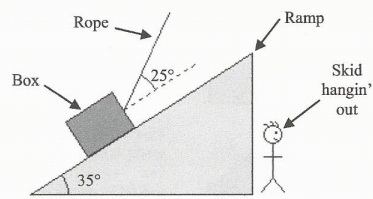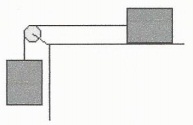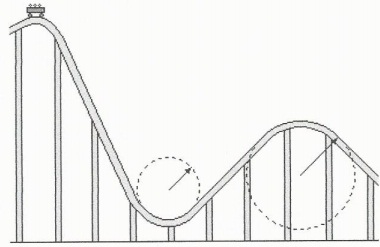Assignment:
Problems:
1) A box of mass 30 kg is being dragged from rest up a frictional ramp by a rope with tension 500 N. See diagram. The ramp has coefficients of static and kinetic friction of 0.5 and 0.3, respectively. (a) Calculate the net work done on the object if it moves 5m up the ramp. (b) At the end of 5 m, what is the box's velocity? (Do not use motion equations.)

2) Do problem l a) over using unit vector notation. Make your x-axis and y-axis horizontal and vertical, respectively.
3) An object moves from a point {3, - 2, 1 } to another point {- 4, 1, 2} while a force F (3x + 1)i - 2j + 6z2k acts on it. Calculate the work done by the force.
4) Skid is dragged kicking and screaming to Mike's Physics class. A force of 100 N is applied to Skid over a distance 50 m. If it takes 5 minutes to do this, what is the power required?
5) A projectile is launched at an angle of 60° above the horizontal with a velocity of 40 m/s. Calculate the maximum height of the projectile while it is flying through the air.
6) A block of mass 0.25 kg is placed on a vertical spring of constant 5 x 10' N/m. The block is pushed down in order to compresses the spring 0.1 m. The block is released from this position. It is forced upwards and eventually leaves the spring and continues traveling up. Calculate the maximum height above the point of release that the block will achieve.
7) A block is at the base of a ramp of angle 35°. The ramp is 5 m long and has coefficients of static and kinetic friction of 0.6 and 0.2, respectively. If the block is initially given a velocity of 12 m/s up the ramp, what will be its velocity right before it hits the ground?
8) An 80 N box is pushed up a 30° ramp by a 100 N force that is applied parallel to the ramp surface. The ramp has coefficients of static and kinetic friction of 0.8 and 0.22, respectively. The box is moved 20 m up the ramp. Calculate the change in kinetic energy of the box while it is moved up the ramp.
9) Two masses, m1 = 10 kg and m2 = 20 kg, are connected by a string that passes over a pulley as shown below. The system is released from rest.
(a) If the surface of the table is frictionless, calculate the velocity of the blocks after they have moved 2 m.
(b) Now, the surface has coefficients of static and kinetic friction of 0.9 and 0.6, respectively. Calculate the velocity of the blocks after they have moved 2 m. (You must use energy methods for this problem.)

10) You and your posse are riding a roller coastcr with no friction. The first tall peak is 140 m high which is followed by a valley that is 10 m high with a radius of curvature of 12 m. The next peak is 60 m high with a radius of curvature 25 m. (a) If the car just barely starts from rest at the first tall peak, what is the velocity of the car at the bottom of the valley? (b) How hard is the car seat pushing up on you? (You have a mass of 35 kg.) (You don't have to use energy methods for this one.) (c) What would be the required height of the first tall peak in order for the car, at the 60 m high peak, just barely not to fly of the track?
